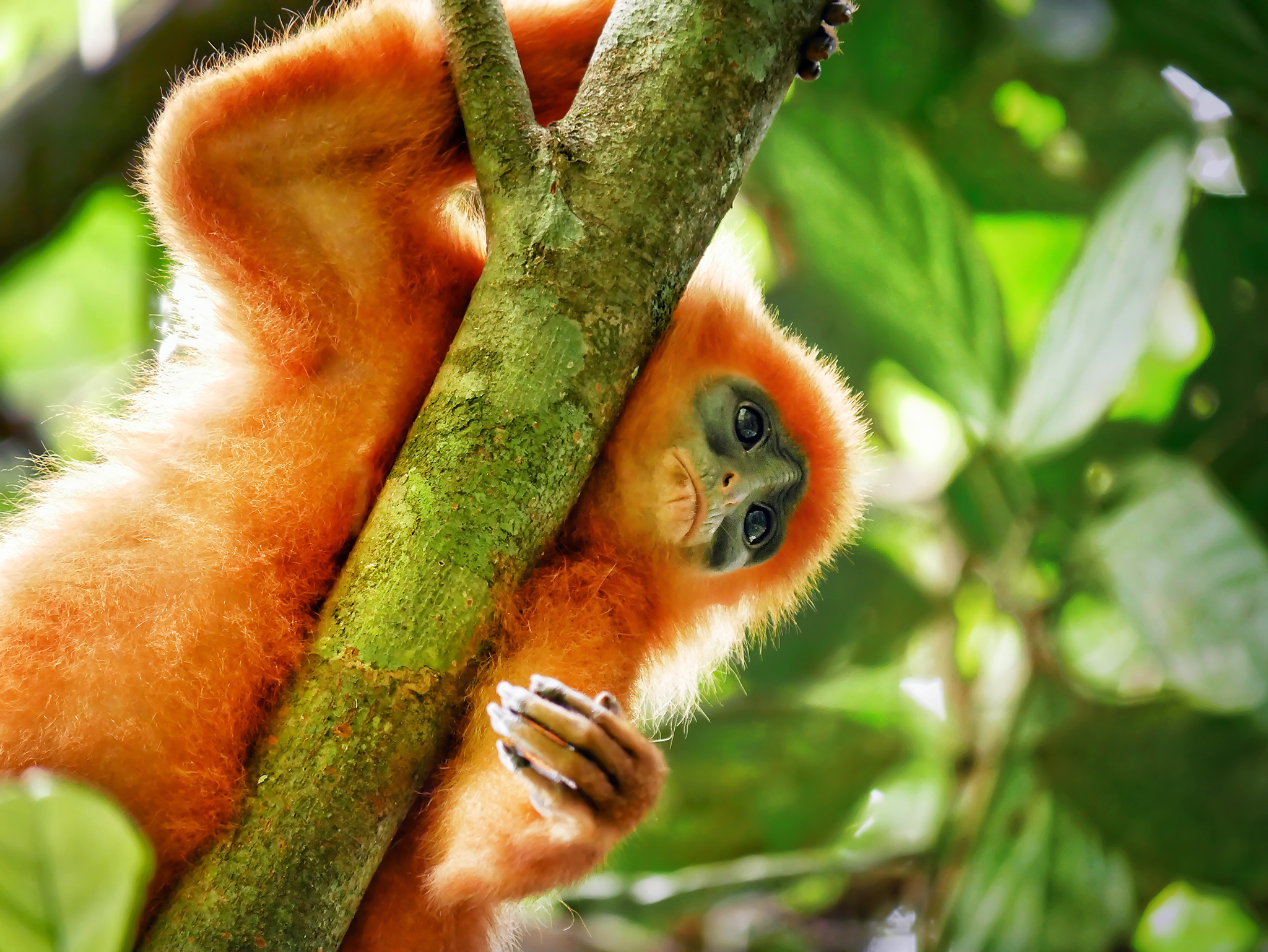Heading into Borneo’s mystical Danum Valley, Orangutans were at the top of my list of animals to spot in the wild. However, it was the captivating Red Leaf Monkeys that stole my heart.

Initially they were frustrating. I remember spotting some on my first day, yelling ‘Orangutan!’ and sprinting over to them, only to find my disappointment quickly replaced by awe at the beauty of these creatures.
This happened countless times, with flashes of orange fur regularly breaking through the canopy. But each case of mistaken identity came with the chance to get to know these incredible monkeys a little better.

Red Leaf Monkeys are also known as Tree Cows (they’re not, but I’m coining it), because, much like cows, they have sacculated stomachs which allow them to digest the tough jungle leaves that make up the majority of their diet.
They’re endemic to the island of Borneo and share their habitat with a variety of other primates, including proboscis monkeys, orangutans, gibbons, macaques and humans. The humans aren’t particularly good at sharing though, and the proliferation of palm oil plantations presents a major threat to the red leaf monkey’s habitat.

Also called Maroon Langurs, Red Leaf Monkeys are arboreal and diurnal, and form polygynous social groupings with up to 18 members.
If any of the words in this post have left you feeling confused, fear not. A wise old Red Leaf Monkey is here to help.

This particular Red Leaf Monkey is the Yoda of Red Leaf Monkeys. Look into his eyes. Look at the vast amount of knowledge contained within them. It was truly an honour to sit and learn from this preposterously pensive primate.
Yoda taught me a bunch of new words that I’d never heard before, which I am now going to share with you. Pay close attention. Study them carefully. You may even like to create some cue cards. There will be a test.
Okay, here we go…
Sacculated: Divided into a series of saclike dilations or pouches (cows have a sacculated stomach with four chambers to aid with digestion)
Arboreal: Living primarily or exclusively in the trees
Diurnal: Being active during daylight hours (the opposite of nocturnal)
Endemic: Only found in a particular region or area
Polygyny: A mating system in which one male lives and mates with multiple females
Hopefully you’ve learned a few new words, and if not, I hope you at least enjoyed the pretty monkey pictures.

Red Leaf Monkeys were easily my favourite primate that I came across in Borneo’s jungles.
Unlike the elusive orangutans, the aggressive macaques, or the constantly snoozing proboscis monkeys, Red Leaf Monkeys were highly inquisitive and playful. They seemed as enamoured with me as I was with them, and they would trickle down from the treetops in groups of two or three to try to find out what I was doing and why I was there.

Each day I returned they became a little more assured that I wasn’t a threat, and ventured a little bit closer to me. It would’ve been fascinating to see just how close they would have gotten if I’d been able to stay just a few more days in this truly magnificent rainforest.
Red Leaf Monkeys are expressive, playful and inquisitive, and while I never managed to find a wild orangutan, I was lucky enough to spend many hours watching these curious, charismatic climbers.
–
Red Leaf Monkeys (Presbytis rubicunda), Danum Valley, Borneo


